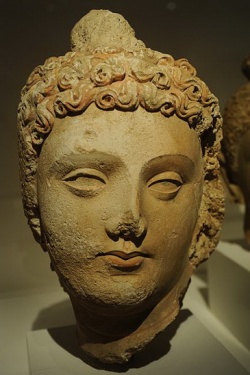Silk Road
The Silkroad (or Silk Road; Chinese: Sichou zhi lu 絲綢之路) or rather the "silkroads" is the most famous and longest trade route of human history.
It served as a path not only for items and goods being transportated from east to west and vice versa, but also as a door for foreign ideas, foreign religions (Buddhism, Manicheism, Zoroastrianism, Nestorianism, Islam), foreign cultures, foreign knowledge (Indian and Arab astronomy and mathematics)
and foreign arts (music, dance, painting, handicrafts) enriching China and for Chinese culture and knowledge leaving the motherland and spreading to the west.
The most important good leaving China and wandering to the west was the silk, hence the name of the road(s), but Chinese knowledge also left China to wander to the west (bookprinting, moxibustion, rhubarb, paper making, compass, porcelain).
The name "silkroad" was first created by the German scholar Richthofen in 1877.
From the begin of the 20th century on archeologists like the Swede Sven Hedin started to rediscover the old trade routes that had stretched from the Chinese capital Chang'an 長安 (modern Xi'an/Shaanxi) to Persia and the Mediterranean Sea from the Han Dynasty 漢 to the end of the Tang period.
The silk road is a name coined by German geographer F. Von Richtofen in 1877, but it refers to a trade network used in antiquity.
It was through the silk road that imperial Chinese silk reached luxury-seeking Romans, who also added flavor to their food with spices from the East. Trade went two ways. Indo-Europeans may have brought written language and horse-chariots to China.
Most of the study of Ancient History is divided into the discrete stories of city-states, but with the Silk Road, we have a major over-arching bridge.
